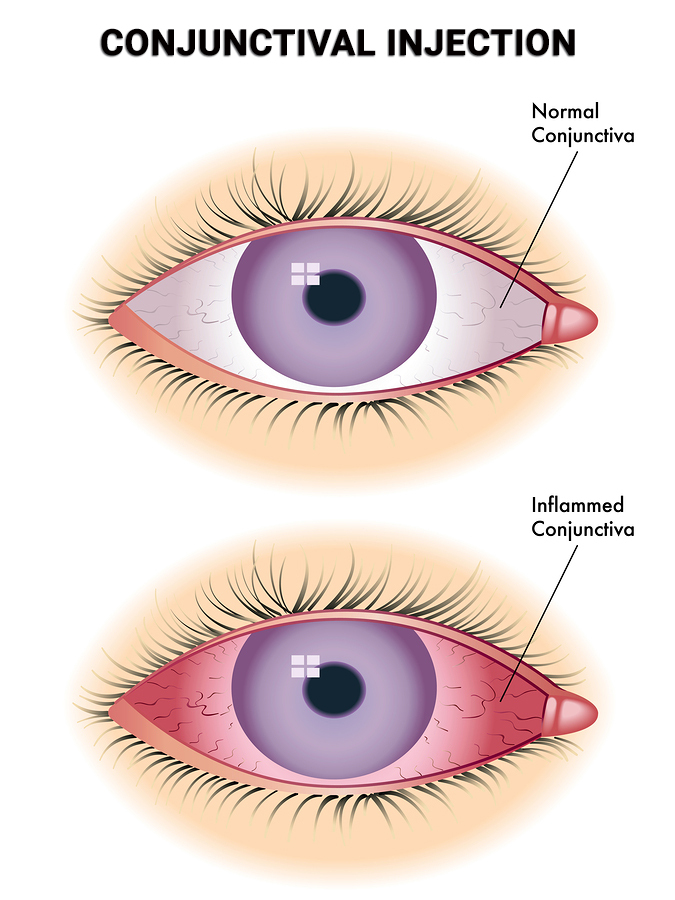 (212) 861-9797
(212) 861-9797
 (212) 861-9797
(212) 861-9797
Small irritations and bumps on your eyes are fairly common, and you may decide to ignore them at first. But early intervention is the best way to protect your vision. The bump may be the beginning of a conjunctival cyst that, left untreated, could lead to severe vision loss. By relying on the best ophthalmologists in New York City, you receive exceptional care and greatly reduce your risks of losing any part of your eyesight due to a cyst. Cysts also sometimes are misdiagnosed as styes, which usually require a different type of treatment. Don’t take chances. At the first sign of a cyst, call Vitreous Retina Macula Consultants of New York. They have three locations to serve you in Manhattan, Brooklyn and Westchester.
 A conjunctival cyst is a fluid-filled sac or a solid or semi-solid mass that develops on your conjunctiva. The conjunctiva is a clear membrane in your eyes that has immunology properties. This membrane covers the whites of your eyes, the sclera, and also lines the insides of your eyelids. It has two main goals: to keep your eyes always greased with tears and mucus and to prevent microbes from entering into your eyes.
A conjunctival cyst is a fluid-filled sac or a solid or semi-solid mass that develops on your conjunctiva. The conjunctiva is a clear membrane in your eyes that has immunology properties. This membrane covers the whites of your eyes, the sclera, and also lines the insides of your eyelids. It has two main goals: to keep your eyes always greased with tears and mucus and to prevent microbes from entering into your eyes.
Don’t confuse a cyst that occurs on the conjunctiva with a chalazion cyst that requires specific chalazion removal or a stye that requires stye surgery. Because the symptoms are so similar, you need to seek a firm diagnosis from a trained, experienced ophthalmologist. The leading eye experts and best ophthalmologists at Vitreous Retina Macula Consultants of New York (VRMNY), eye surgery center have the tools and expertise to come to the correct diagnosis. With about 64 percent of Americans diagnosed with eye problems, don’t delay medical care when it comes to the health of your eyes.
There are two ways that you can get a conjunctival cyst. Your eye doctor from NYC has to classify the type of cyst you have, which is only possible after a thorough eye examination. The two types are:
Conjunctival cysts are mostly benign masses that are classified as either primary or secondary. The primary conjunctival inclusion cyst is a rare form that’s present from birth. The mass usually increases in size and can eventually encroach on the cornea, leading to obstructed vision. Secondary conjunctival inclusion cysts require some form of catalyst, such as:
I've been an extremely satisfied 'Client' of this marvelous group of Optical Wizards since 2006. The care and treatment provided here is always extraordinary. Most impressive is how committed VRMC is to the ever evolving technology in the advancement of tackling Optical degeneration. I can't imagine a finer Clinic than this for treatment of my Retinal condition.
Small cysts usually are asymptomatic. If you do feel anything, it may be a mild irritation that may just require foreign body removal from your eye. Many people, however, only seek out treatment from an eye doctor if the cyst is in a location that affects their appearance.
Large cysts often keep growing, which leads to eye pain and discomfort. If the growth covers your cornea or the central part of your retina, you experience some vision loss. You may also feel that you can no longer control your eye movements or that there are limitations on how far your eyes can move. Other potential symptoms include:
Diagnosis usually starts with a discussion during your consultation with a top-rated ophthalmologist. Talk about your symptoms, when you first noticed the cyst and your eye health history. Also tell your doctor about any past eye surgeries you may have had, such as LASIK eye surgery or glaucoma surgery.
To get a clearer picture on how deep the cyst is seated, you may need to undergo some advanced diagnostic imaging tests available at VRMNY, such as:
Sometimes, your eye doctor takes a specimen culture. The sample is tested for bacterial or fungal pathogens and known allergens. Additionally, a conjunctival injection or a bilateral conjunctival injection helps diagnose an infection or inflammation in the cyst.
In most cases, the cyst does eventually clear up on its own. Your eye doctor may recommend interventions to clear up the cyst, such as:
Your NYC ophthalmologist may prefer cutting out the cyst completely to ensure it doesn’t return. Under local anesthetic, the doctor makes a small incision around the cyst, ensuring the cyst doesn’t break. The cyst is carefully removed and the affected blood vessels sealed.
No matter which treatment you undergo, you need to keep follow-up appointments with your eye doctor for a minimum of one year to ensure there’s no recurrence of the cyst. Routine checkups are the best way to discover a cyst and receive the best treatment before you lose your sight. To book an appointment, contact your nearest VRMNY ophthalmologist, with convenient locations in Westchester, Manhattan and Brooklyn.
Let us help you enjoy your life
Call: (212) 861-9797To Speak With An Appointment Coordinator Now